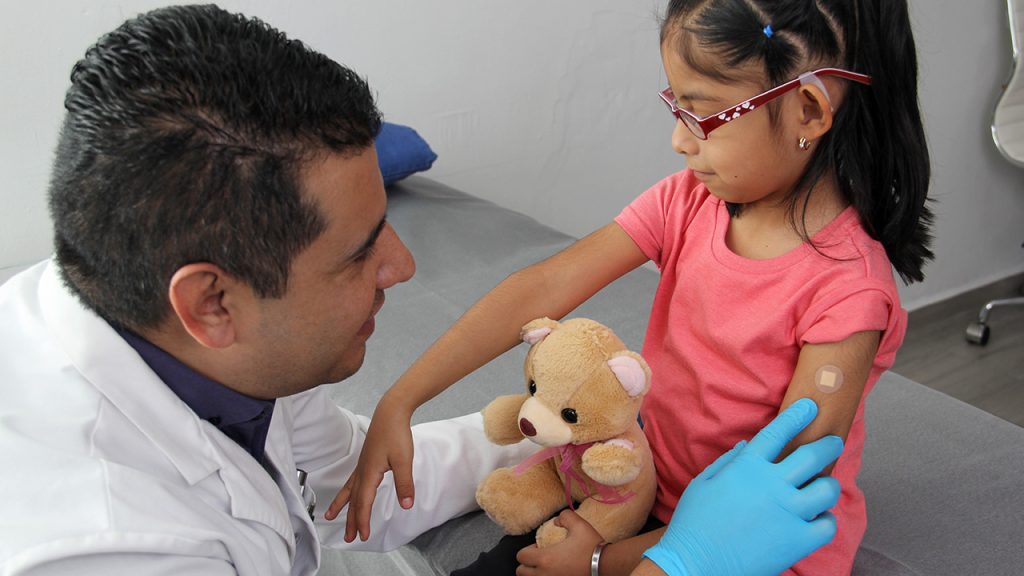As measles spreads around the country, one Fordham expert sees a troubling trend in the data: clusters of unvaccinated and undervaccinated children that could form a “network” of new outbreaks.
What’s driving the trend? While some smaller clusters reflect poverty and lack of health care, “by and large, these much larger pockets are in places where people just have an aversion to vaccines, likely due to misinformation,” said economics professor Troy Tassier, Ph.D., author of The Rich Flee and the Poor Take the Bus, a 2024 book focused on socioeconomic aspects of controlling outbreaks.
Eighteen states, from New York to Alaska, have reported a total of 378 measles cases as of March 21, and 17% of them required hospitalization, according to the Centers for Disease Control and Prevention, or CDC. There has been one confirmed death, of an unvaccinated school-age child in Texas. That’s where the real surge has been, with 327 cases reported since late January, the state’s health department said.
Two percent of cases in the current national outbreak involved people who were fully vaccinated. While two doses of the measles vaccine are 97% effective at preventing the disease, vaccinated people can still get “breakthrough” infections amid an outbreak in their communities, according to the CDC.
More people are seeking exemptions to states’ vaccination requirements, citing personal or religious reasons, Tassier said. The number reached an all-time high in the 2022-2023 school year, contributing to a 2% decline in vaccinations nationally, he wrote on his Substack, citing CDC data. That leaves the national rate at approximately 93%—which is worrisome, Tassier said.
Why is a 2% drop in our national vaccination rate a cause for concern?
That drop isn’t happening evenly across society; it’s happening in specific places. If every population that you can think about—every school district, every community, every county, every state—had a 93% vaccination rate, we’d be in pretty good shape. The problem is we get 93% because most counties have near 100% coverage and other counties have 60% coverage. And that’s more dangerous than having everybody at the same level.
So how does that relate to social networks like Facebook?
Your social network spreads out in layers—you connect with people you see every day, then work colleagues, then friends you see rarely. And then you might connect with an old friend who opens up 20 more connections to your high school crowd. Epidemics kind of spread the same way. When a kid gives measles to a friend a couple counties away and they’ve got a bunch of unvaccinated friends, then it spreads from one social network to another. And then it sort of pockets itself again and replicates in that county. Then it could go to another county and another.
Tell me more about the trends and your predictions.
Outbreaks like the one in Texas are becoming more common because of these pockets of unvaccinated kids. It used to be that our vaccination rates and the distribution of vaccines were more evenly spread across the country, so that we had only a handful of cases every year, but that started to change around 2010. Since then, every two or three years you get a year where there’s hundreds of cases, or even more than a thousand.
So in some ways, this outbreak isn’t that bad. But the danger with measles is that once it takes hold in an unvaccinated population, it just goes everywhere. If a school has only 70% vaccine coverage, and an infected kid walks into the lunchroom, that’s a whole lot of kids exposed. And it lingers in the air for as long as two hours—through that lunch period and the next one and the next. We’re going to get a case in one of these schools that’s going to make this outbreak look really, really small. I’m amazed it hasn’t happened yet. An outbreak in New York City fueled a thousand-plus U.S. cases in 2019.
Are the unvaccinated risking only their own health?
No. The danger is that not everybody can be vaccinated. Some immunocompromised kids, for medical reasons, can’t be vaccinated. And folks like Robert F. Kennedy Jr. want to talk about parent choice and all of that, but that kid doesn’t have a choice. He can only stay home from school and live at home or go out in the world.

